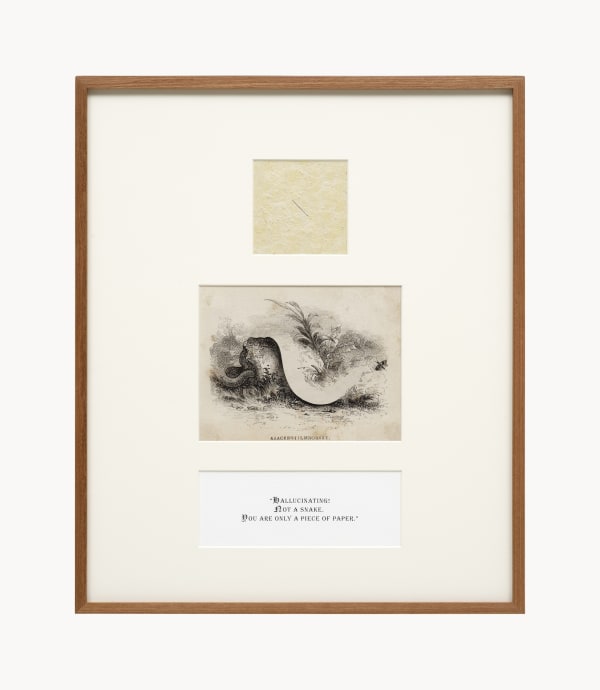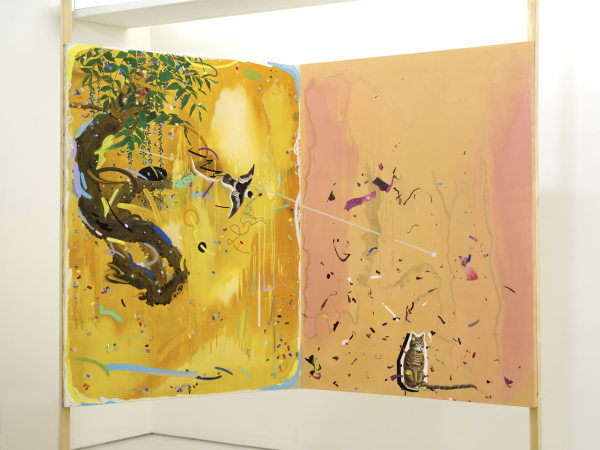Eccentricities of Inanimation: Choi Hae Ri
Chapter II is delighted to announce an exhibition, ‘Eccentricities of Inanimation’, of works by Haeri Choi from 25th October to 8th December in 2018 in Yeonnam-dong, Seoul.
In 2016, at the group exhibition, ‘ARTSPECTRUM 2016’, curated by Leeum, Samsung Museum of Art, Haeri Choi suggested an experimental alternative of traditional paintings’ expandability by displaying a series of media works which contained sensitive deployment of multi-dimensions and complex notions. Through this solo exhibition at Chapter II, Choi will present how a depth of her artistic insight has developed with particular impetus.
The Korean title of the exhibition is Japanese dictation of ‘Eccentricities of Inanimation’ and its literal translation refers to ‘sequences of moving nonliving objects’. The exhibition will disclose a vast range of Choi’s collection embracing paintings, sculptures, artworks produced based on digital datum of outdated graphic art culture and documents found in antique book and painting shops during a trip in Kyoto.
As her previous works have showed, most of titles of her exhibitions and artworks convey multiple layers of certain information. Choi’s practice has titles which are barely accepted in a general rule of Korean grammar and they are decipherable and indecipherable at the same time due to scarcity of chosen words and their unusual combination. It consequently demonstrates her manner of planning and completing artworks. The combination of visual and textual aspects is her unique approach towards expandability of paintings and it ultimately isolates spectators in the midst of an unknown place between an artwork and its title. Playing a role of enabling viewers to draw their own subjective interpretations according to each person’s experiential acknowledgement and appreciation style within a number of possible paths that the artist designed, the titles are not declarative yet still provide obscure implications.
The exhibition consists of three critical elements, ‘Journey, Time and Record’. Especially, the artist’s collection which is a big part of this exhibition, including an anonymous painter’s woodblock prints and printed materials discovered in antique book and painting shops in Kyoto, is an outcome of her journey and a main support of a multi-layered structure of the exhibition. For example, Haeri Choi regarded the anonymous artist’s delicate prints as William Morris (1834 - 1896)’s oeuvres; also, in terms of visual motifs, the prints have parallel factors with Choi’s practice such as a rabbit’s horn. Sharing formal features of oriental paintings, her artworks achieved by extremely elaborate depictions show not only artificial aesthetics but a flat texture of their surface, offsetting an inherent discrepancy in a relationship with printed materials and traditional prints.
‘Eccentricities of Inanimation: Sequences of Moving Nonliving Objects’ is a sort of visual fiction and in this context, the artist is a chronicler and a collector. Similar to a director deciding which recorded parts would be remained in a film and constructing a whole plot of it, the artist thoroughly forms a description mode from a third person’s standpoint. In this respect, it is intriguing that compulsive aesthetic traits of conventional paintings appeared in imageries of her works such as rabbits, birds and chicks operate as a starting point of magnifying an undertone of each work, instead of restricting it. Thus, these figures are a firm foundation which gives an opportunity to viewers to restart interpreting the works when they are lost in an opaque journey of appreciation.
Since images of Choi’s practice possess a peculiar impression of experiencing a multi-dimensional event which disobeys a sequential order flowing from the past to the future through the Time Warp, they underline a sense of time in each piece. A head of a blue tit depicted as a slow-motion figuration whose body seems to have right and left positions simultaneously implies uncertainty in its coordinate location when the bird was painted. This indicates that the descripted objects are not necessarily included in a realm of the universal laws of physics, and therefore they can not be understood within a typical structure of narrative. Above all, the expression of plants in a particular piece, ‘Rabbit Horn (2018)’, allows even spectators who are not familiar with a Buddhist fable related to these objects to detect that the scene does not illustrate only a mediocre phenomenon of everyday life.
-
 Choi Hae Ri, Decoy, 2018
Choi Hae Ri, Decoy, 2018 -
 Choi Hae Ri, Gothic Youth, 2018
Choi Hae Ri, Gothic Youth, 2018 -
 Choi Hae Ri, Rabbit Horn, 2018
Choi Hae Ri, Rabbit Horn, 2018 -
 Choi Hae Ri, Papertoon #1 excerpt from Blade Runner (1982), 2018
Choi Hae Ri, Papertoon #1 excerpt from Blade Runner (1982), 2018 -
 Choi Hae Ri, Papertoon #2 excerpt from Blade Runner (1982), 2018
Choi Hae Ri, Papertoon #2 excerpt from Blade Runner (1982), 2018 -
 Choi Hae Ri, Papertoon #3 excerpt from Blade Runner (1982), 2018
Choi Hae Ri, Papertoon #3 excerpt from Blade Runner (1982), 2018 -
 Choi Hae Ri, Tri-faced Blue Tit, 2018
Choi Hae Ri, Tri-faced Blue Tit, 2018 -
 Choi Hae Ri, Purchased documents from old bookstore wood print, 2018
Choi Hae Ri, Purchased documents from old bookstore wood print, 2018 -
 Choi Hae Ri, Turtle hair and moss dots, 2018
Choi Hae Ri, Turtle hair and moss dots, 2018 -
 Choi Hae Ri, Confirmation, 2018
Choi Hae Ri, Confirmation, 2018












